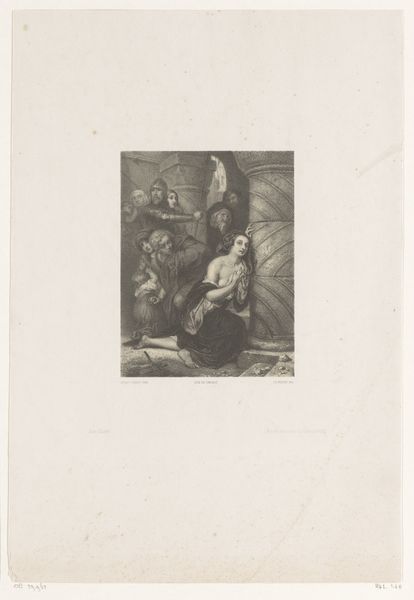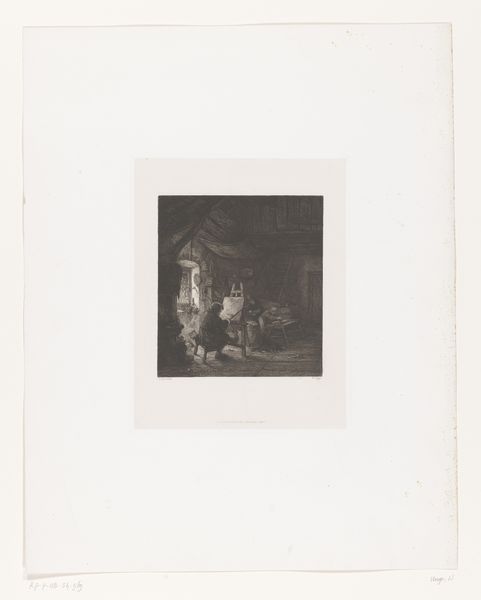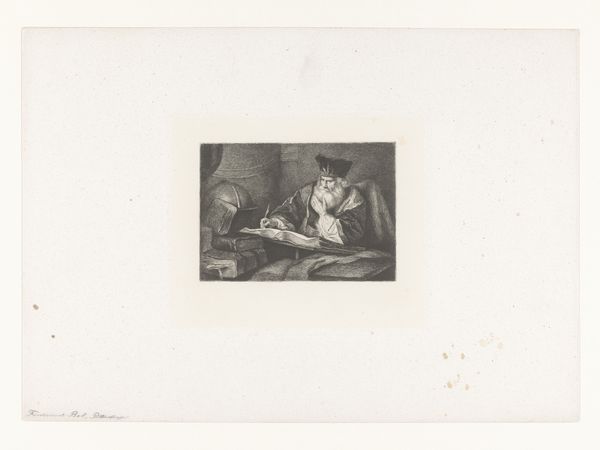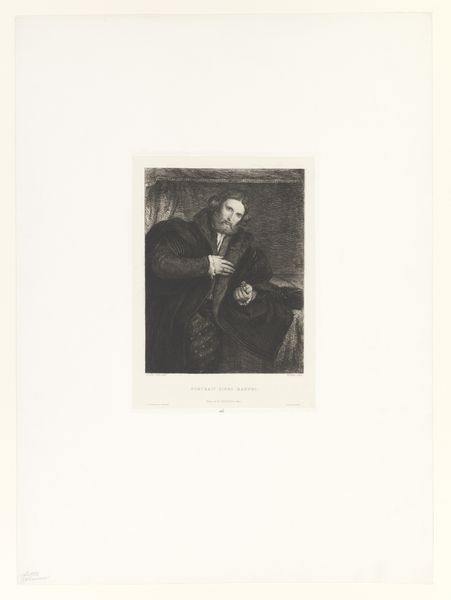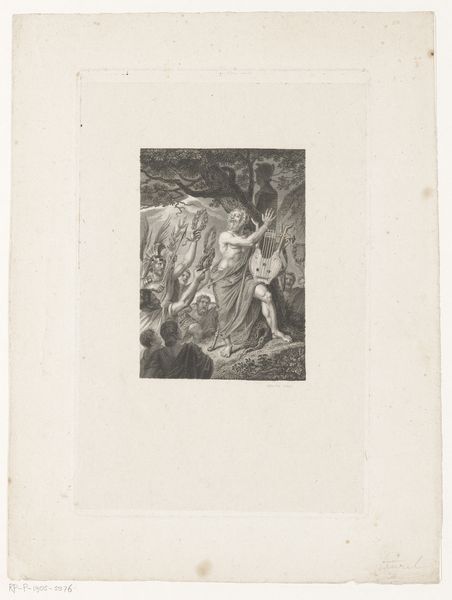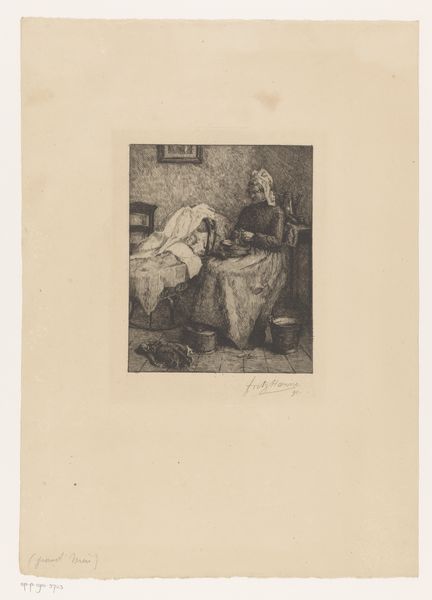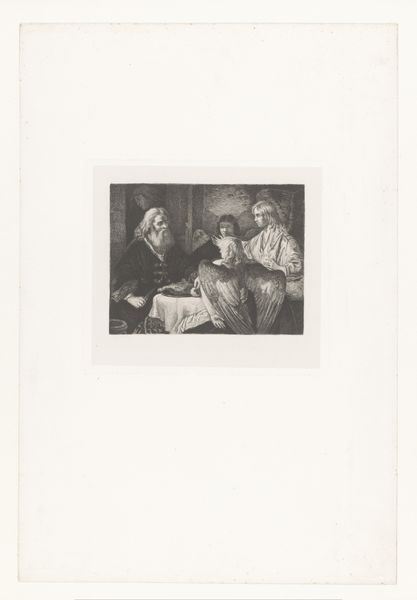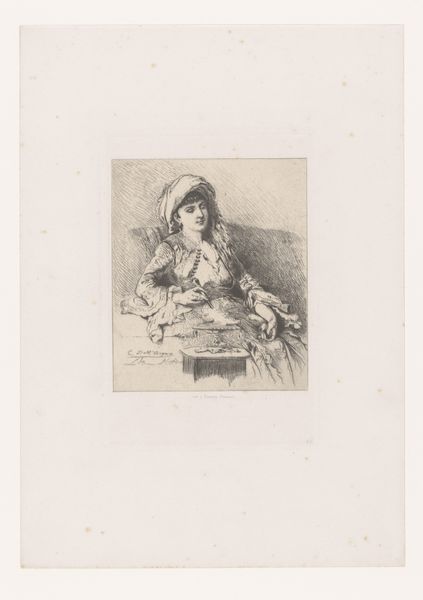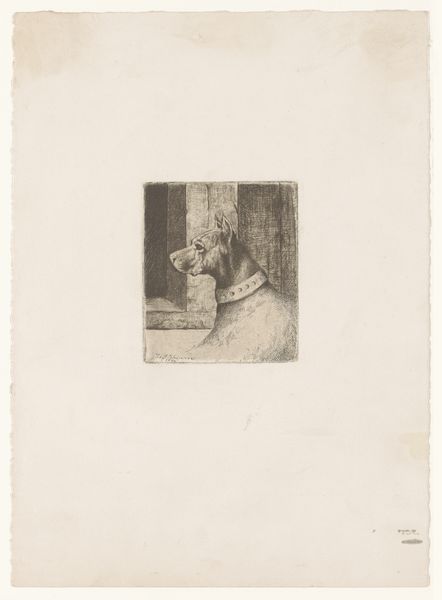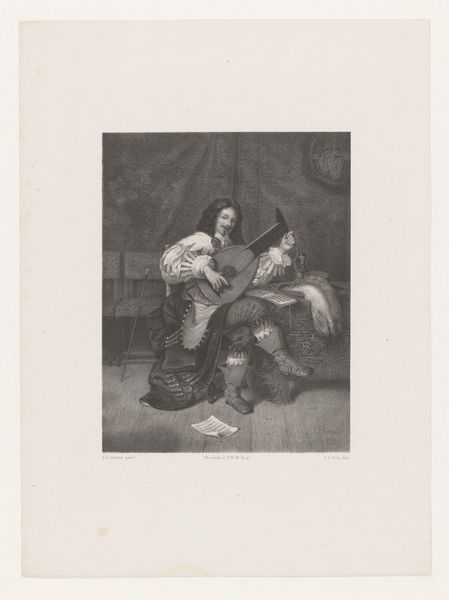
drawing, lithograph, print
#
portrait
#
drawing
#
narrative-art
#
lithograph
# print
#
german-expressionism
#
group-portraits
#
expressionism
#
monochrome
Dimensions: 425 mm (height) x 331 mm (width) (bladmaal), 171 mm (height) x 169 mm (width) (billedmaal)
Curator: Kollwitz’s lithograph, “Ein Weberaufstand - Not,” created between 1894 and 1898, pulls you into the desperate world of the Silesian Weavers' uprising. The location of this important print is SMK, Statens Museum for Kunst. Editor: That title, "Not," it just seeps out of the image. Look at those bowed heads, the darkness closing in—it's a visual scream of despair. The printmaking intensifies that darkness in some way, that you cannot achieve with paint for example. Curator: Absolutely. As a lithograph, it would have been relatively accessible, printed on paper, circulating among the working class as both art and a call to action. Consider Kollwitz’s focus on representing the plight of laborers and how this informs her process. Editor: There's almost a brutality to the composition; it’s unsettling. Like we are intruding into an intensely private, painful moment. Curator: Exactly, it’s not a romanticized view. She depicts labor not as a noble endeavour but as a source of immense suffering. The texture—those dense, scratchy lines—creates a claustrophobic sense of confinement, mimicking the weavers' oppressive conditions and emotional distress. You almost feel the scratchiness. Editor: I keep thinking about the figures looming in the back corner... are they the only source of warmth? Or of more trouble to come? Curator: Those figures contribute to the suffocating atmosphere, they're onlookers, or perhaps collaborators. Her manipulation of light and shadow speaks volumes; stark contrasts emphasize their exhaustion and the abject poverty of their working and living spaces. Note her conscious effort to portray their collective experience of hardship through emphasizing body language and spatial relations, not through individualized features. Editor: It stays with you, this image. Not in a pleasant way, but an important one. Curator: Indeed, "Not" and the rest of "The Weavers’ Revolt" series remind us of the potent role art can play in social critique. The technical qualities amplify the piece’s accessibility and social commentary.
Comments
No comments
Be the first to comment and join the conversation on the ultimate creative platform.
